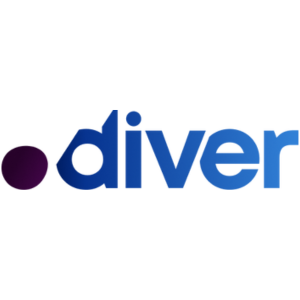LISTEN IN A POD APP
Filters
Sierra Tishgart | Great Jones
Keeping your post product-launch momentum — Sierra Tishgart // Great Jones
Today we're going to discuss how to make the most out of your product launches. Joining us is Sierra Tishgart, the Co-Founder at Great Jones, which is a modern kitchen company that marries substance with style by equipping, encouraging, and inspiring people to cook more frequently. In part 2 of our conversation, we're going to…
Play PodcastSierra Tishgart | Great Jones
Product launch prep for D2C brands — Sierra Tishgart // Great Jones
Today we're going to discuss how to make the most out of your product launches. Joining us is Sierra Tishgart, the Co-Founder at Great Jones, which is a modern kitchen company that marries substance with style by equipping, encouraging, and inspiring people to cook more frequently. In part 1 of our conversation, Sierra is going…
Play PodcastJeff White | Kula Partners
Manufacturing Industry Strategies & Channel Mix — Jeff White // Kula Partners
Today we continue talking about marketing in the manufacturing industry by getting specific with industry strategies and channel mix. Joining us again is Jeff White, who is a Principal at Kula Partners, which helps leading manufacturers digitally transform their marketing and sales processes to grow their competitive edge. In part 2 of our conversation, Jeff…
Play PodcastJeff White | Kula Partners
Marketing Landscape for the Manufacturing Industry — Jeff White // Kula Partners
Today we discuss the marketing landscape in manufacturing and how you can optimize your marketing for growth in the manufacturing industry. Joining us is Jeff White, Co-founder and Principal at Kula Partners, which helps leading manufacturers digitally transform their marketing and sales processes to grow their competitive edge. In part 1 of our conversation, Jeff…
Play PodcastEric Toda | Gap Inc (Hill City)
Go-to-market strategies for Hill City: Gap Inc’s Men’s Apparel Brand — Eric Toda
Eric Toda joins us today for Part 2 of our conversation about building a unique brand within a larger company. Eric is a Marketing Executive who's worked at some of the world's highest profile brands including Facebook, Nike, Snap, and Airbnb. He's currently Head of Marketing at Hill City, which is a men's active apparel…
Play PodcastEric Toda | Gap Inc (Hill City)
Branding Hill City: Gap Inc’s Men’s Apparel Startup — Eric Toda
Joining us today is Eric Toda, a Marketing Executive who's worked at some of the world's highest profile brands including Facebook, Nike, Snap, and Airbnb. Eric is currently Head of Marketing at Hill City, which is a men's active apparel brand owned by Gap, Inc. In this episode, Eric walks us through his approach to…
Play PodcastRachel Lanzerotti | REST Method
AMA: Marketing Local Services & Solving for Chronic Back Pain // Rachel Lanzerotti — REST Method
Joining us for today's Ask Me Anything is Rachel Lanzerotti, a certified Yoga Therapist, Founder of Five Rivers Yoga, and pain recovery specialist who created the REST Method for pain recovery. REST utilizes therapeutic movement to strengthen, soften, stabilize, and release, with careful attention to unrecognized habits that are contributing to their pain/fatigue. Her evidence-based…
Play PodcastMitch Duckler | Fullsurge
Brand Evaluation & Optimization — Mitch Duckler // Fullsurge
In Part 2 of our conversation with Mitch Duckler, Managing Partner at FullSurge, our topic is brand evaluation and optimization. FullSurge is a firm that helps predominantly Fortune 1000 companies accelerate business growth through a comprehensive blend of brand and marketing strategy. Mitch has over 25 years of line management and business consulting experience.
Play PodcastMitch Duckler | Fullsurge
Brand Building & Maintenance in the Digital Age
Joining us to discuss brand building and maintenance in the digital age is Mitch Duckler, Managing Partner at FullSurge, a firm that helps predominantly Fortune 1000 companies accelerate business growth through a comprehensive blend of brand and marketing strategy. Mitch has over 25 years of line management and business consulting experience.
Play PodcastJohn Shehata | Conde Nast
Career Day: Hacking your way to SEO stardom — John Shehata // Conde Nast
Today we get an inside view into the lessons learned from a great marketer throughout the various stops on his career. Joining us for career day is an SEO specialist turned media mogul, John Shehata. John is VP of Audience Development at Conde Nast, a premier media company that attracts more than 100,000,000 consumers across…
Play PodcastAbout Marketing Channel: Brand
What is Branding in Marketing?
Branding is closely tied in with marketing but differs in that branding is about creating a company identity - Marketing concerns how you advertise that identity to target audiences. Branding occurs before marketing, as a company needs naming conventions, a logo and trademarks to create a brand identity to market.
What is a Brand?
A brand is a unique design, logo, trademarks, set of terms or specific features that define a company's services and goods from others. Simply put, it's the way the world perceives a business or company. Defining a brand is integral in marketing, advertising and businesses to generate long-term brand recognition and create market value.
Strong brands are easily identifiable, consistent and possess distinct traits and features that resonate strongly among customers and stakeholders. Some of the most popular brands in business right now are:
- Nike
- Amazon
- Coca-Cola
- Kraft Foods
- Apple
- Netflix
- Honda
- Nintendo
Elements of a Brand
- Name, or naming, conventions for the company, services and products
- Taglines or catchphrases
- Logos, graphics and shapes
- Color palettes
- Songs, sounds or jingles
- Unique tastes of flavors
Branded Naming Conventions and Definitions
- Initialism - Naming conventions based on initials, like IBM, KFC and CNN
- Descriptive - A naming convention that directly describes a product's function, like Bank of America or Hotels.com.
- Foreign language - Foreign brands that are descriptive of their geographical location and manufacturers like Toyota, Honda and Volkswagen.
- Founder's Names - Branded naming conventions that utilize the founder's names, which are commonly found in fashion brands. Examples include Michael Kors and Vera Wang.
- Portmanteaus - Brands that combine multiple words into one, such as Amtrak and Panera.
- Puns - Brands that utilize puns in their names, like Lyft.
What is Brand Identity?
Brand identity is the collection of all marketing elements and designs businesses create to portray the right image to consumers.
Effectively creating a brand identity requires businesses to create their own brand values. Brand values encompass the following:
- Creating a company mission statement.
- Choosing values that drive your company and fulfill your mission.
- Deciding what brand personality your company should adopt.
- Taking a unique brand positioning.
- Determining the brand voice your company communicates in.
Once brand values are determined, design elements will help bring a brand to life. A strong, visual design helps tell a brand's story. Brand design elements like logos, trademarks, packaging, web design and employee apparel t-shirts build and enhance brand recognition.
Characteristics of Successful Brands
- They're highly competitive - Successful brands consistently innovate to stay competitive in markets. They also understand sales aren't the only metric for success.Competitive brands employ large teams to handle every aspect of operations from administrative assistants to C-suite executives who focus on innovating in every sector of the business possible. Successful brands go the extra mile to leave lasting impressions on customers.
- They offer distinctive brand experiences - Memorable brand experiences build trust in customers by delivering unique, high-quality services and products. Memorable, consistent experiences lead customers to identify you with a product or service. When they need to purchase that product again, the business that created memorable experiences for them will first come to mind.
- They're passionate about what they do - Long-term brand success depends on the passion of the people driving it. Passion drove Oprah Winfrey and Steve Jobs to become household names. Possessing a genuine passion for a brand can inspire customers and turn small business owners into an international brand.
- They practice consistency - Although brands rely on innovation to stay competitive, they also need to stay consistent. Popular brand logos might change over time, but they still retain visual elements of their original design that customers can easily identify. A strong brand identity ensures a business stays top-of-mind with audiences.
- They're led by strong leaders - Well-known leaders are vital to brand building and branding strategy. The strongest brands are led by influential leaders who inspire their employees, and audiences, for greatness. Whether a large or small business, the right leader can build trust among customers and drive a company toward longevity.
- They seek exposure - Brands utilize multiple marketing channels to build brand awareness among its target audiences. Companies are able to scale quickly when their advertising strategies use social media, video and experiential marketing to envelop customers in the brand.
Effective Brand Strategies
Successful brand strategies consist of specific, long-term strategy and goals that nurture a company's character and helps it evolve over time. The main attributes of successful strategies answer consumer needs and emotions.
Although logo design, company websites and naming conventions are important to a brand, it's the intangible attributes that customers are drawn to. Here are essential branding strategies companies can use in brand-building processes.
- Have a strong purpose - A defining purpose is crucial for success in a market where consumer confidence is low and budget vigilance is high. A well-defined purpose separates a company from its competitors. Strong vision and mission statements help cultivate public perception of a brand and make stronger impressions on audiences.
- Inspire emotion - Emotional branding that connects with target audiences, and gives them the opportunity to feel like they're part of a larger group, helps campaigns achieve success. Belongingness and the innate human desire to build relationships is a huge part of emotional branding. Hitting the right triggers can strengthen bonds with customers.
- Stay flexible - Although consistency defines the standard for brands, flexibility allows for adjustments to build interest and distinguish brand promises from the competition. Brands with long legacies change to meet the moment, updating the brand image, brand guidelines and improving customer experiences to meet current audience needs.Popular brand Nike evolved over time, but stayed consistent with branding mainstays like its "Just Do It," trademark. The brand message stays consistent with the brand story as marketers continue to innovate the "Just Do It," story.
- Get employees involved - How employees interact with customers is vital to messaging efforts. Portraying a positive, uplifting atmosphere on the company website while employees act disinterested while providing customer service is detrimental to brand building. Aligning messaging company-wide, from content to personal interactions, is an essential brand-building strategy.
- Reward loyalty - When clients and customers engage with and put trust into a company, it's wise to reward them for their dedication. Cultivating client and customer loyalty early on guarantees more returning customers, which boosts profits for businesses. A simple thank you message, personalized letters, discount codes or even free merchandise can boost customer engagement and trust.
- Monitor competitors - Viewing competitors as a challenge to improve brand strategy is a healthy mindset to possess. Watch competitors and the risks they take. Do they pay off? Do they fail?Observing competitor performance can reveal branding opportunities that are unique to your business. Where they may have failed, you can succeed. Take account of what strategies succeeded and what didn't, and formulate a branding strategy that works for you.
What is Personal Branding?
Personal branding functions like corporate branding, except marketing efforts, are focused on the perception of one individual. Individual branding positions one person as an authority in their respective industry, focusing on elevating their credibility to differentiate themselves from the competition.
Personal branding is leveraged by a wide range of professionals from self-help coaches to influencers and politicians. Personal brands utilize the power of social media for brand management and to communicate with target audiences. Personal brands allow for more personal messaging and sole control of brand voice.
Often individuals choose their own name as their company name, operate as small businesses or startups and have descriptive value propositions. Like company branding, sole practitioners utilize logos, use unique packaging, buy unique domain names, taglines and open online stores to reach potential customers and acquire sales.
Personal Brand Building Strategies
- Communicate strengths and passions - Clearly communicating passion is essential for personal brands to experience success. When a leader or influencer is passionate about their work, they naturally pursue success. Potential customers can tell when someone is passionate about their work, and more likely to support someone who loves what they do.
- Set clear objectives - Some sole branding practitioners like to share their hobbies online, while others want to develop entire careers from it. Setting clear objectives reveal what KPIs to set to achieve certain benchmarks. Launching a career requires setting KPIs that accomplish specific brand-building initiatives.Example KPIs that lead to brand growth include measuring social post engagement, website visits, external mentions and time spent on site.
- Become a subject matter expert - Most people building a solo brand are typically subject matter experts in one or multiple professional disciplines and industries. People who've demonstrated they hold extensive knowledge and expertise in a particular industry are effective brand builders.People are more likely to follow brands with an experienced leader behind them. Influencers whose content focuses on reviewing products is another example of SMEs. The more they use various products, the more likely they gain dedicated followers.
- Choose the right social media platforms - Brand content creators concentrate their efforts on social media platforms that meet their content marketing needs. Although one might consider publishing their content on all social platforms, it's best to concentrate on the platforms that suit your content and brand.Testing campaigns across multiple platforms first is key to determine which platforms work best for your brand. The usefulness of certain platforms will change over time, so it's best to make platform testing a routine part of the brand-building process.
- Produce content consistently - Providing a frequent flow of content is key to brand building. It keeps personal brands and small businesses top of mind with consumers. How you present this information, textually or through visual mediums, is important as well.Creating content consistently builds a following, which creates a community that supports your brand. Content creation is a vital aspect of brand marketing and is an essential component to personal, successful brand building.
What is Brand Recall?
The definition of brand recall is when a brand's memorability is so strong in consumers, they're able to instantly recall it from memory to address an immediate need. When a consumer needs a new pair of shoes, they recall brands they're familiar with from memory to speed up decision-making. Strong shoe brands like Nike or Adidas are likely the first brands to spring to mind in customers as they've demonstrated longevity, possess strong value prepositions, and offer high-quality products.
Brand recall is difficult to attain for many brands and is steadily built through digital marketing, brand building, and content marketing efforts. This process is known as marketing-mix modeling. It helps marketers optimize how they leverage marketing budgets to maximize marketing performance and generate a greater impact on brand awareness and sales
Read MoreRead Less
Sponsors of the MarTech Podcast



































